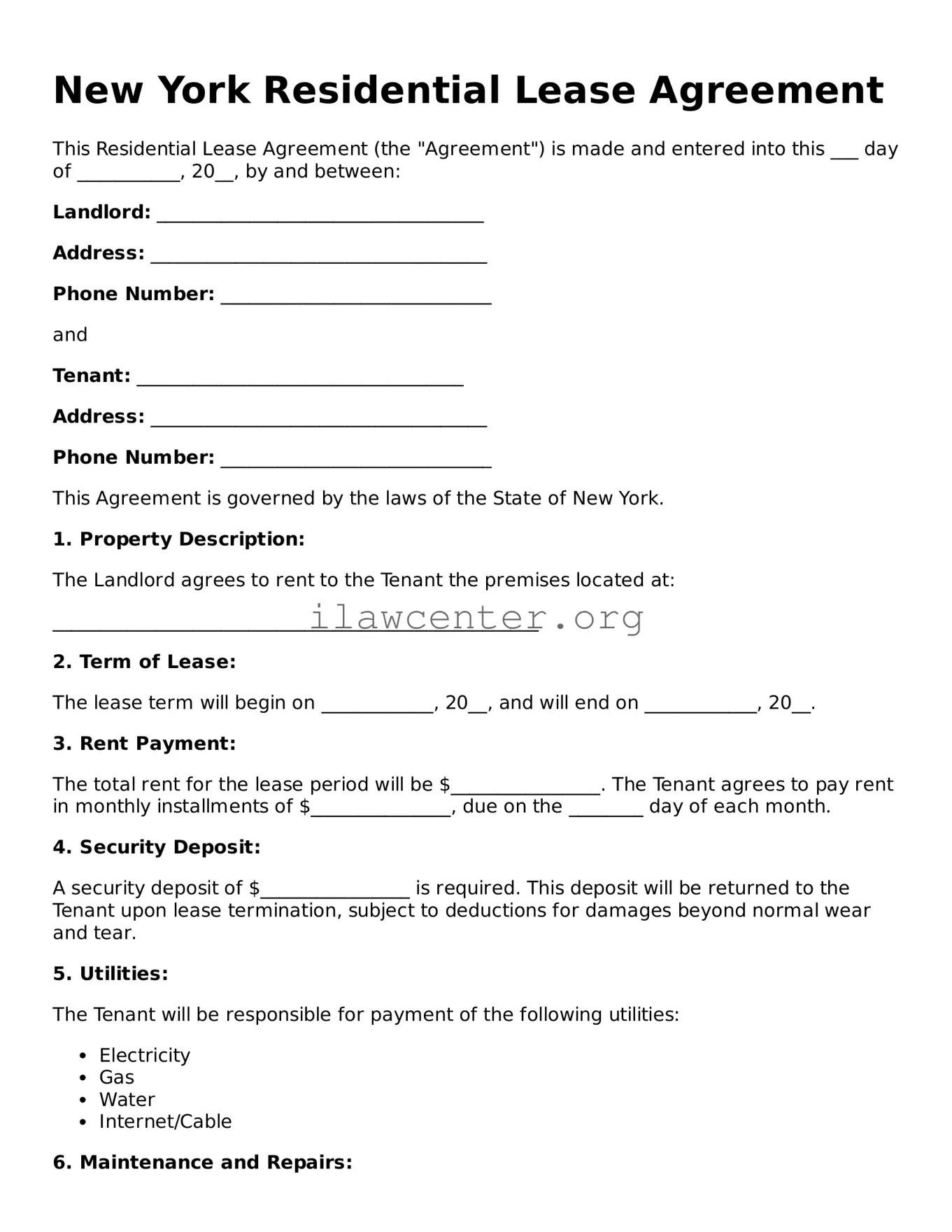Instructions on Utilizing New York Residential Lease Agreement
Filling out the New York Residential Lease Agreement form is a crucial step in securing your rental property. This document outlines the terms of the lease, responsibilities of both the tenant and the landlord, and other important details. Make sure you cross-reference with local laws or consult a professional if needed.
- Read the Entire Agreement: Carefully review the lease agreement to understand all terms and conditions.
- Fill in the Date: At the top of the form, enter the date when the agreement is being signed.
- Provide Tenant Information: Write the name(s) of the tenant(s) as they will appear on the lease. Include all adults who will live in the property.
- Enter Landlord Information: Fill in the name and contact information of the landlord or property manager.
- Describe the Rental Property: Indicate the full address of the property, including city, state, and zip code.
- Specify Lease Term: Clearly state the start and end dates of the lease. Ensure these dates align with what has been agreed upon verbally.
- Set Rental Amount: Include the monthly rental amount and specify when it is due each month.
- Detail Security Deposit: Enter the amount of the security deposit required, along with terms for its return.
- Outline Utilities: Indicate which utilities are included in the rent and which are the tenant's responsibility.
- Sign the Agreement: All tenants and the landlord must sign and date the form to make it legally binding.
Make sure to keep a copy for your records. This ensures both parties have access to the terms agreed upon. If any questions arise, address them promptly to avoid misunderstandings in the future.
